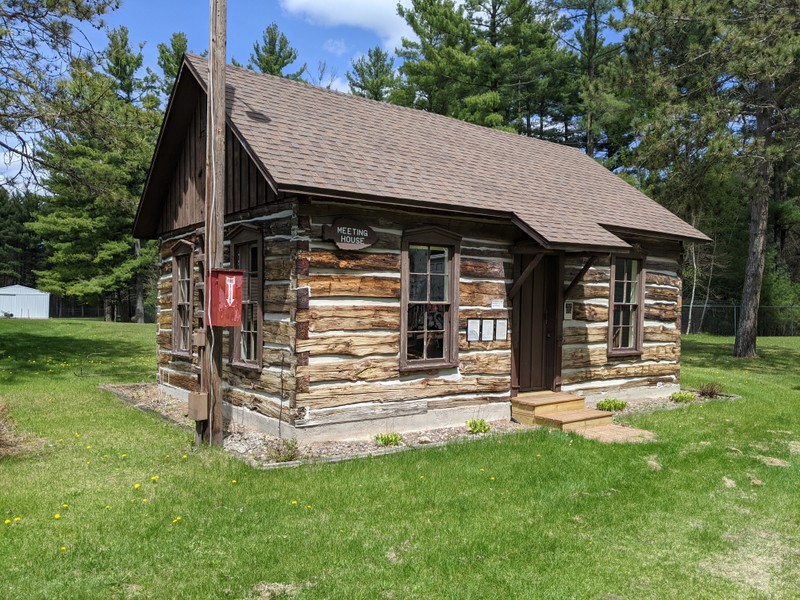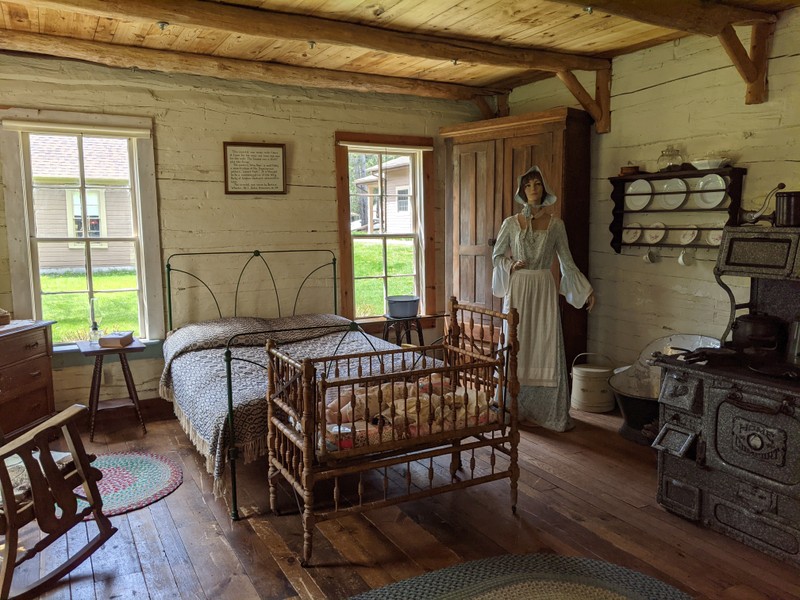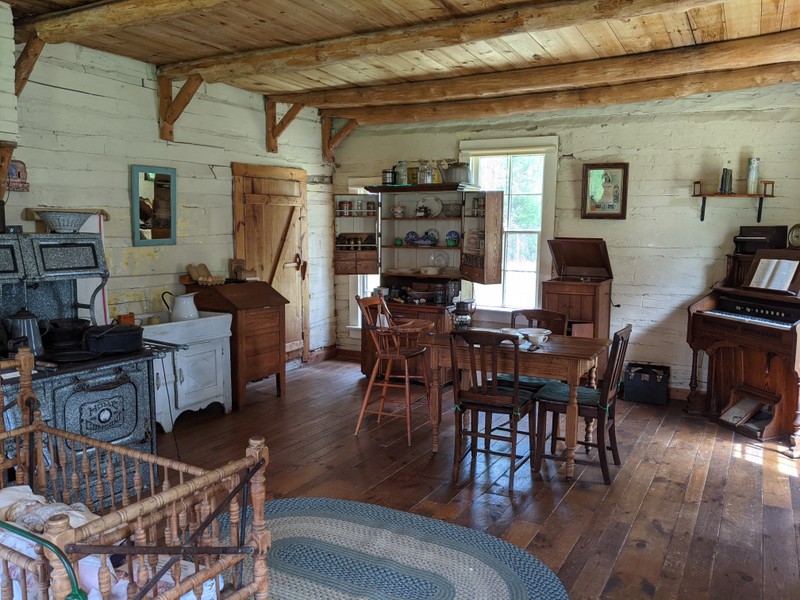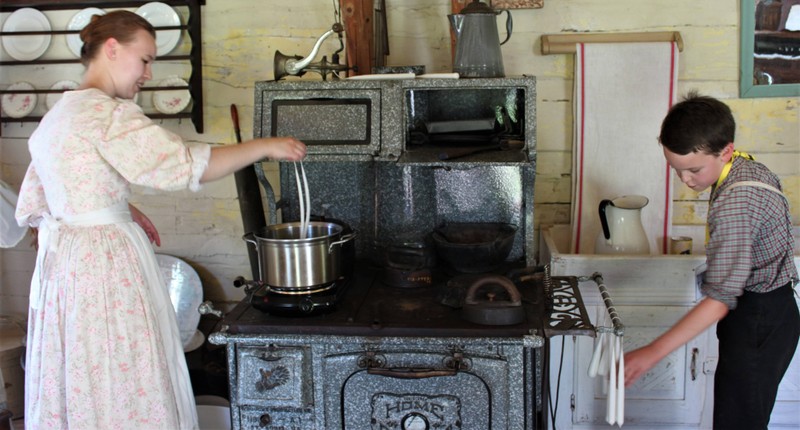The Meeting House
Introduction
Text-to-speech Audio
The Meeting House is representative of a staple feature in early settler communities. Clergymen frequently traveled from one town to another as communities developed, and without provisions to afford hotels or boarding houses, many would stay at settlers' homes. These clergymen were critical for communities without an established church and clergy to perform important church rites and services such as baptisms and marriages. In some places, an established "meeting house" near the community church also served as boarding for clergy.
Images
Peter Johnson Urberg home sited near the Ebenezer Church as the Pioneer Village Meeting House. 05 May 2021

Interior of the meeting house, featuring the parents' bed and cradle. Children slept in the upstairs, which is currently inaccessible. 05 May 2021

Interior of the meeting house featuring the kitchen and dining area, as well as the back door. 05 May 2021

Pioneer Village Museum volunteers making candles on the kitchen stove. 05 May 2021

Backstory and Context
Text-to-speech Audio
One of the houses these clergymen stayed in was the house of Peter Johnson Urberg. This 17' x 25' log house was built in 1877 in the township of Maple Grove (now known as Prairie Lake). The chamfer and notch construction used basic tools, including the maul, mortise, axe, and saw. In 1922 the farm was sold to Elmer Holmstrand. He took the building apart, then put it back together at the Pokegama Inn Resort, in Chetek, Wisconsin. Roger Hamholm of Pokegama Inn donated the building to the museum in February 1975.
ABOUT THE FAMILY
Peter Jorgensen Johnson Urberg was born in Urberg, Kragro, Norway on January 12,1846. He was the son of Mr. Jorgen Olavsen (Heiland) Urberg and Kari Kristensen (Strat) Urberg. As a young adult he took care of his parents, his disabled brother, Kristen, and their farm. In 1866 Peter married Aase Helene Jensen, who was born on May 2, 1843 in Frovig, Norway. In 1867 the Urbergs moved to the United States and were given the name Johnson at the port of entry. They first lived in Detroit, Michigan, and later moved to Kilbourn, Columbia County, Wisconsin, now known as Wisconsin Dells, where they bought a farm. The soil was too poor to make a living, so Peter went out as a raftsman, while his family took over the farm. In 1877 they sold the farm, and Peter went to look at land in Barron County. He bought 80 acres of land near the community of Maple Grove for $200 from the railroad company. He cleaned a little area of land to build a log cabin. His family was able to live in it in the fall of 1877. His wife died at the age of 41 from complications of childbirth on 18 March 1844. Peter Johnson died at the age of 75 on 5 June 1921.
Many of Peter Johnson's descendants still live in the Chetek, WI area.
Sources
Jensen, Clarice. Kettner, Carol. Barron County Historical Society and Pioneer Museum History. Edition 2. Volume 1. Cameron, WI. Unpublished - Binder Bound in Museum Archives, 2018.
Swanson Linquist, Muriel. Wold, Claudia. Urberg Family Tree. Copy held at the Pioneer Village Museum. 2 May 2019.
Izzie Benes
Izzie Benes
Izzie Benes
Izzie Benes
